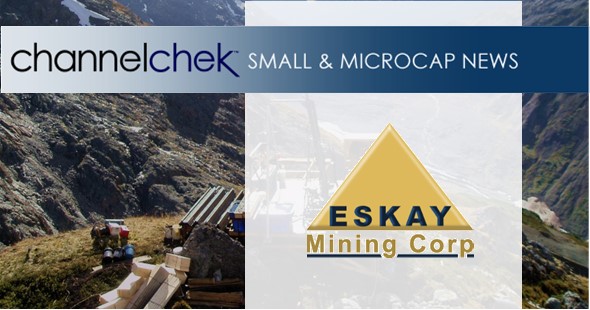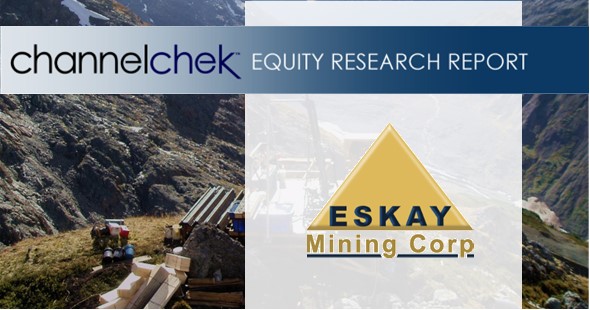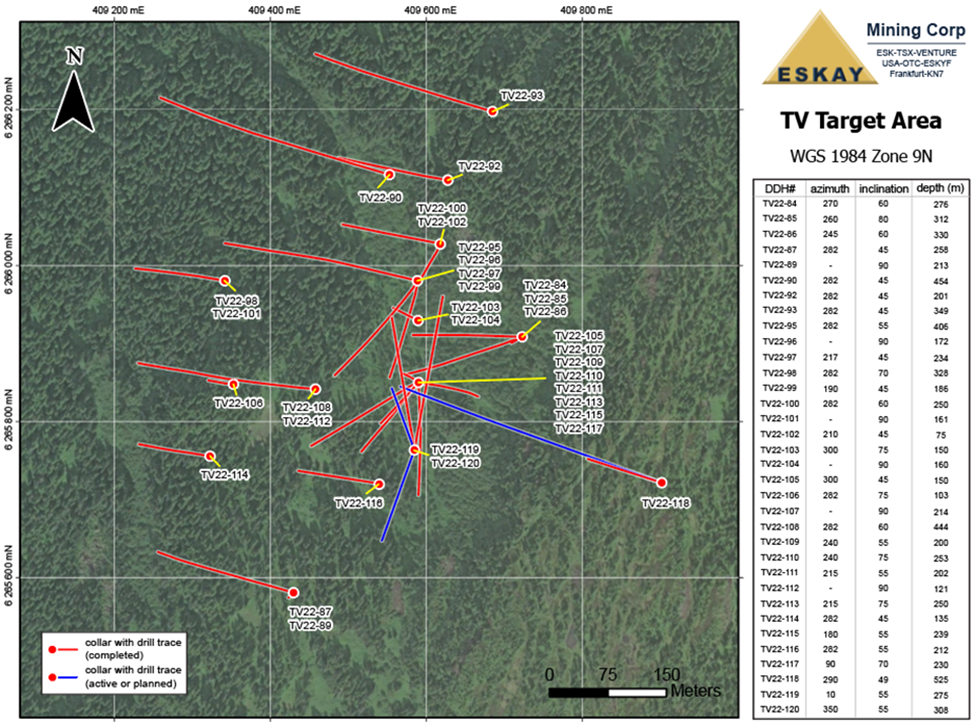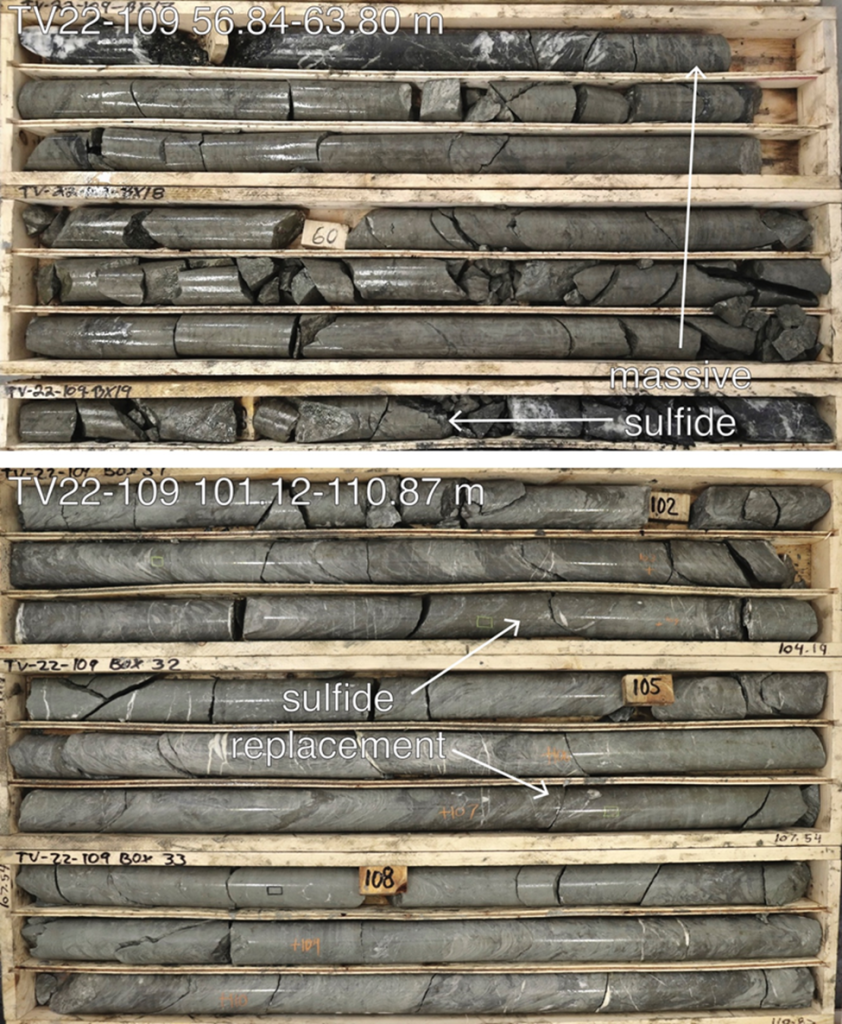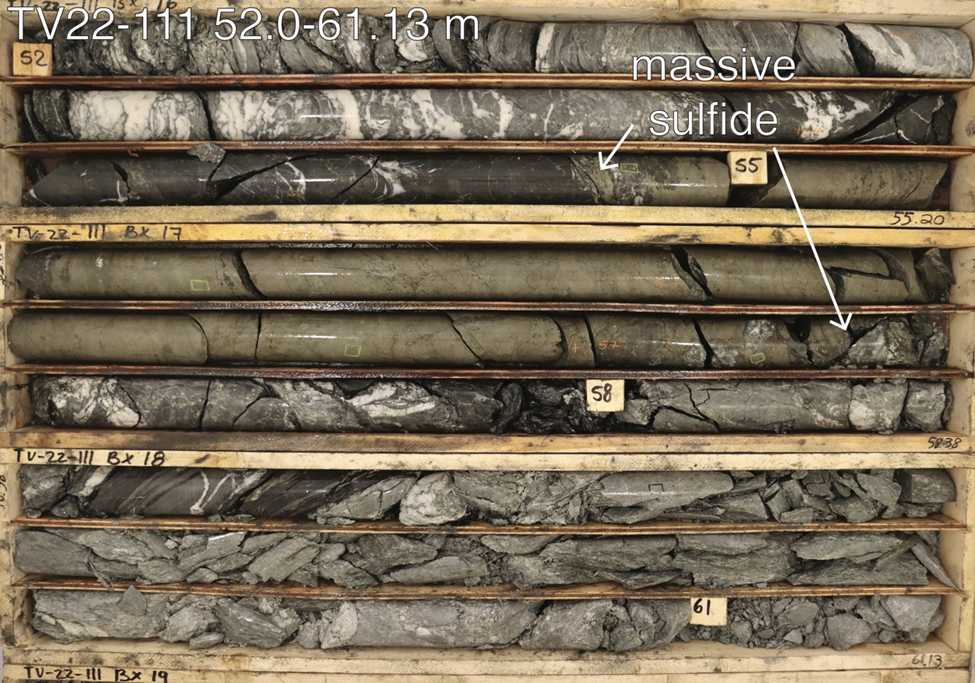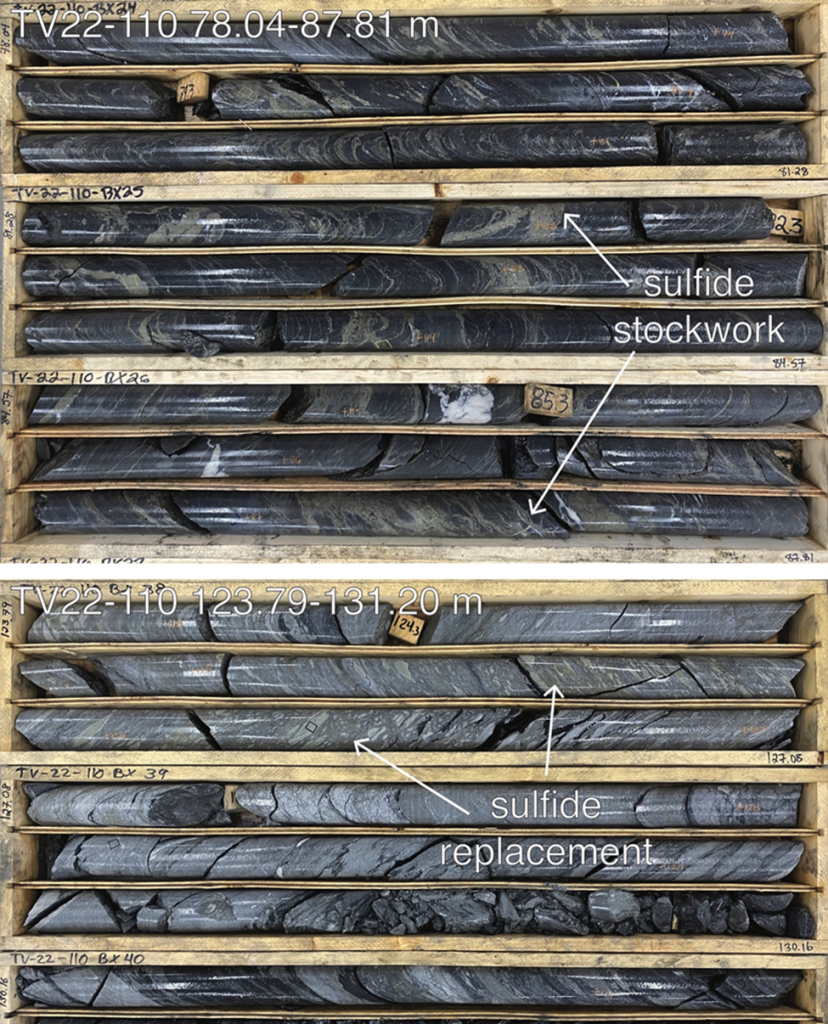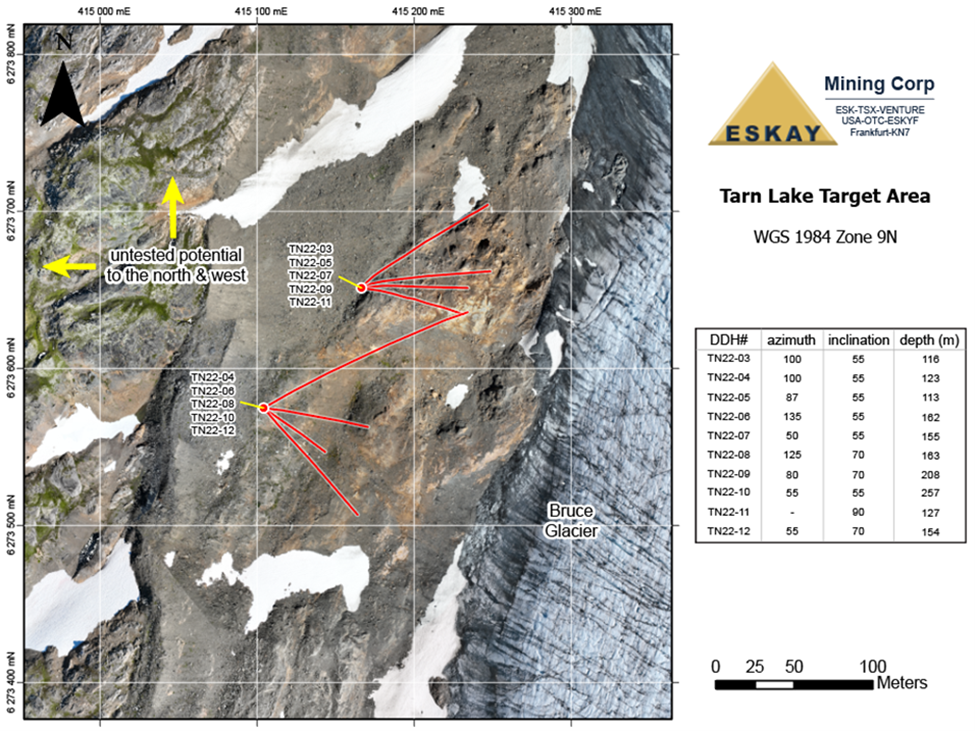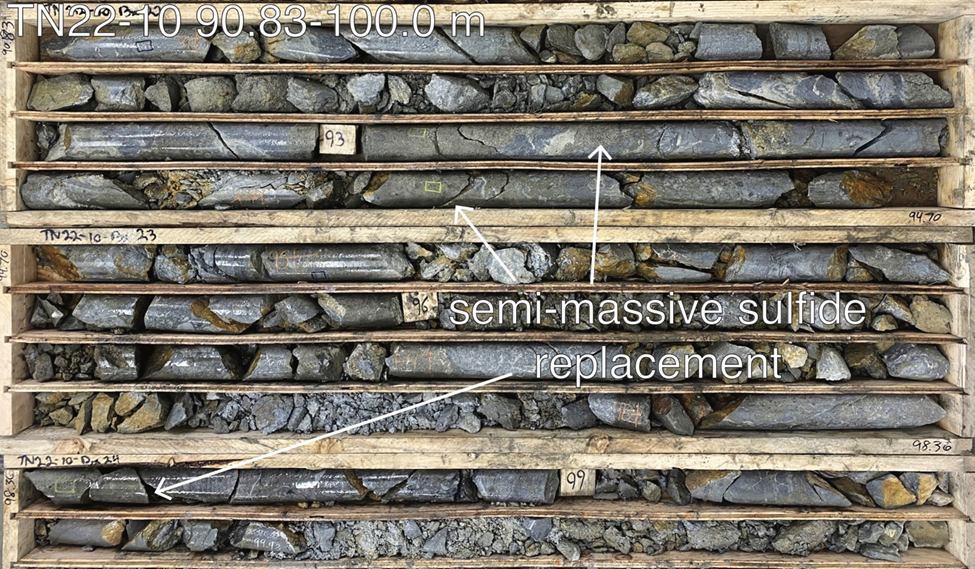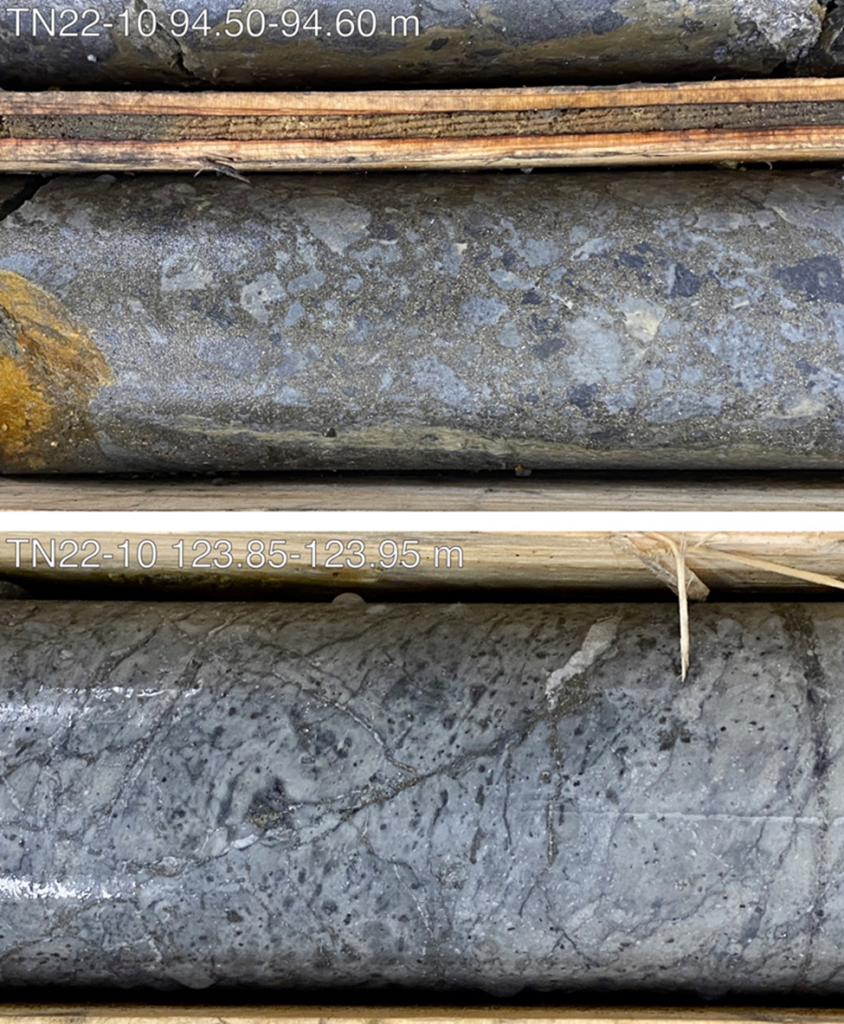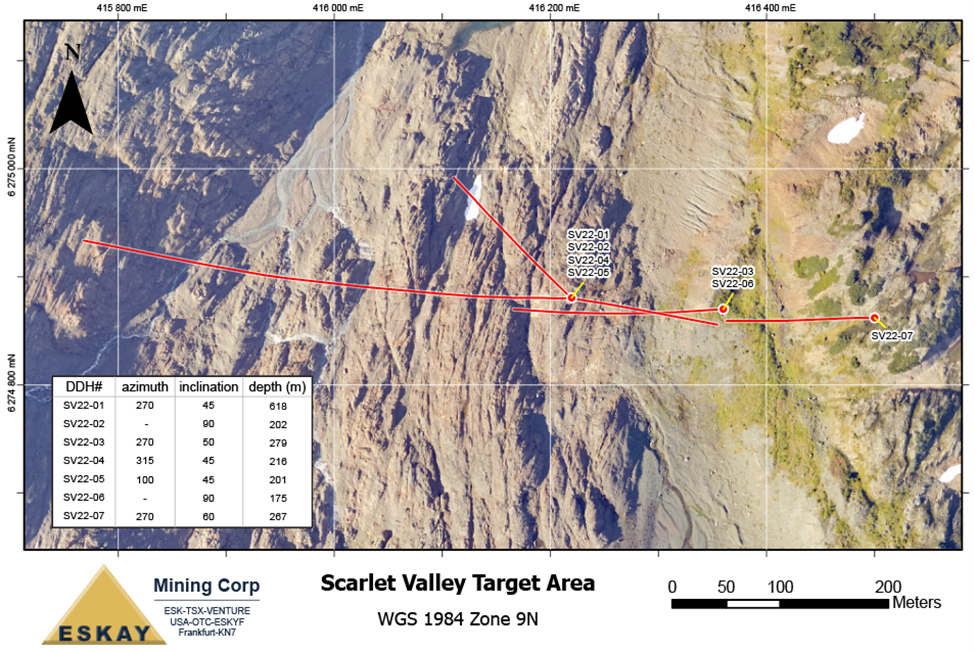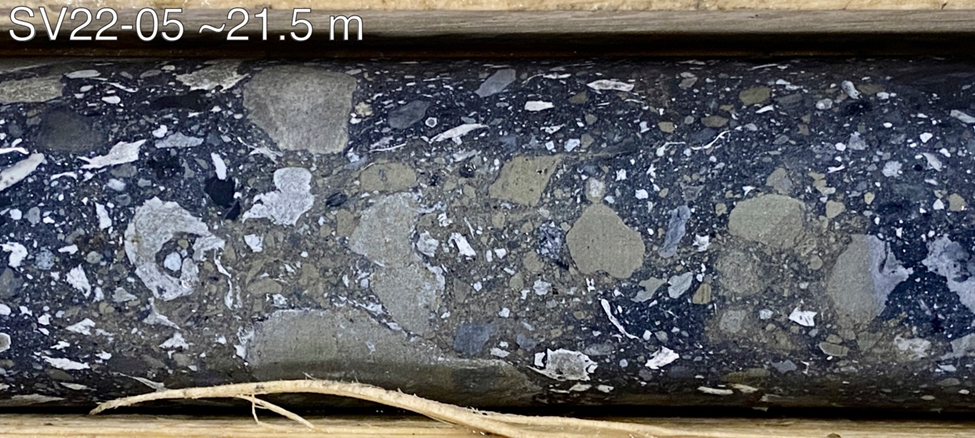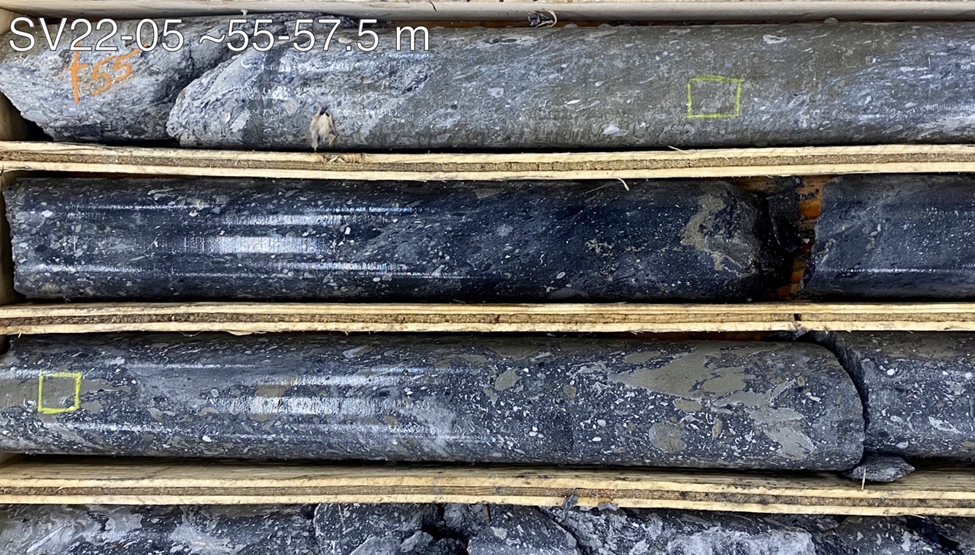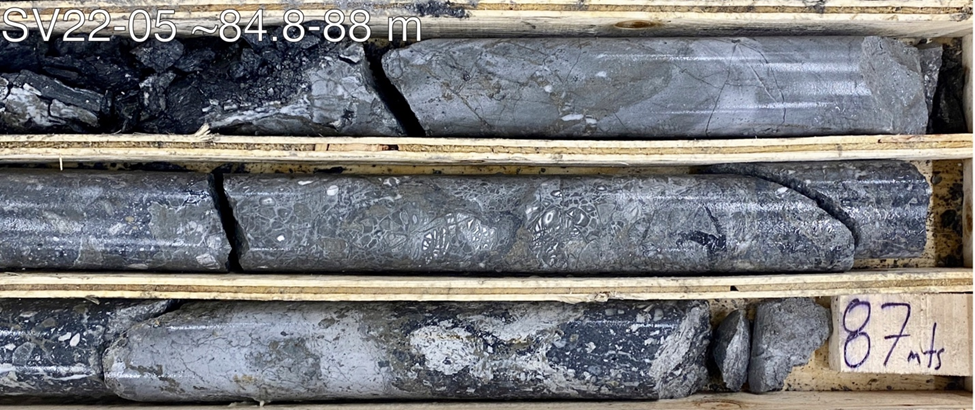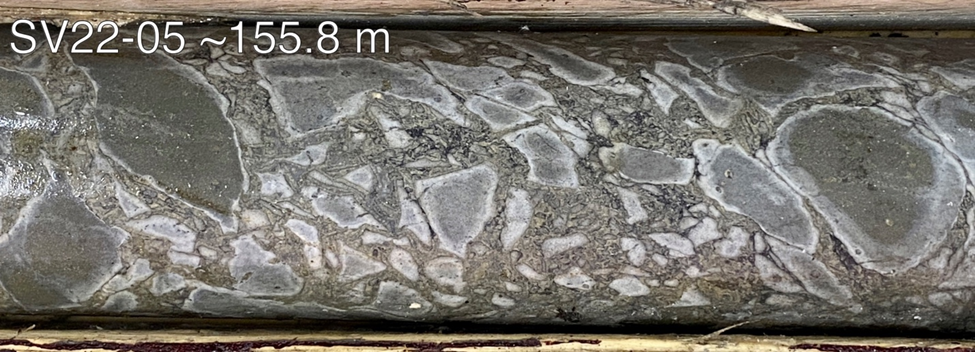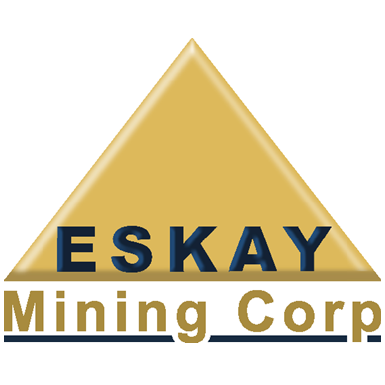
Research News and Market Data on ESKYF
February 23, 2023
TORONTO, ON / ACCESSWIRE / February 23, 2023 / Eskay Mining Corp. (“Eskay” or the “Company”) (TSXV:ESK) (OTCQX:ESKYF) (Frankfurt:KN7)(WKN:A0YDPM) is pleased to announce further encouraging diamond drill results from its 2022 exploration program at its 100% controlled Consolidated Eskay Property in the Golden Triangle, British Columbia.
“Results from our 2022 exploration season demonstrate Eskay’s team has made considerable progress toward unraveling the district-scale potential of VMS mineralization surrounding the Eskay Creek deposit,” commented Dr. John DeDecker, VP of Exploration for Eskay Mining Corp. “Achievements of the 2022 exploration program include defining a new trend of VMS mineralization along the Scarlet-Tarn corridor parallel to and approximately seven kilometers east of the Eskay anticline. Tarn Lake and Scarlet Knob are situated along an east-west trending VMS feeder structure hosted by Eskay rhyolite like that seen in the footwall of the Eskay Creek deposit. Mapping and prospecting define a westward stratigraphic younging direction suggesting that stockwork and replacement-style mineralization at Tarn Lake may represent feeders to seafloor-hosted mineralization up-section towards the important Contact Mudstone horizon, host to high-grade mineralization at Eskay Creek. This recognition is a significant step towards meeting our goal of discovering new Eskay Creek-like high-grade VMS systems. Drilling at TV now shows that Au- and Ag-bearing massive sulfide extends 100 m along strike and overlies an even more extensive zone of stockwork mineralization. We are eager to follow up on all of these encouraging results in 2023.”
TV Extensional Drilling
Highlight results:
- 4.61 gpt Au and 22.17 gpt Ag (4.89 gpt Au Eq) over 6.28m within 2.84 gpt Au and 22.17 gpt Ag (3.13 gpt Au Eq) over 16.36m in hole TV22-105
- 2.66 gpt Au and 30.45 gpt Ag (3.05 gpt Au Eq) over 10.56m within 1.51 gpt Au and 25.39 gpt Ag (1.83 gpt Au Eq) over 43.09m in hole TV22-120
- 3.36 gpt Au and 109.50 gpt Ag (4.76 gpt Au Eq) over 2.00m within 1.14 gpt Au and 30.40 gpt Ag (1.53 gpt Au Eq) over 30.56m in hole TV22-97
- 6.88 gpt Au and 21.00 gpt Ag (7.15 gpt Au Eq) over 1.10m within 1.28 gpt Au and 87.92 gpt Ag (2.41 gpt Au Eq) over 14.95m in hole TV22-109
Drilling at TV in 2022 expanded the footprint of both the Upper Massive Sulfide Zone and Stockwork Zone at TV (Figures 1, 2 and 3). Massive sulfide mineralization now extends approximately 100 m along strike, ranges from 5 to 10 m in thickness, and is characterized by sulfide lenses hosted by intensely silicified carbonaceous mudstone associated with peperitic dacite (Figures 4 and 5). Massive and semi-massive sulfide mineralization overlies an extensive stockwork feeder zone hosted by dacitic and andesitic breccia and peperite. Stockwork mineralization now extends approximately 175 m along strike, 175 m down dip, and ranges in thickness from 50 to 100 m. Significantly, drill holes testing the up-dip extent of the stockwork zone (TV22-106, 108, and 112) intercepted strongly anomalous Au and Ag values with interspersed values over 1 gpt Au equivalent. Rock chip samples collected from the vicinity of these drill holes suggest that this up-dip zone may contain higher grade pockets of Au and Ag mineralization (Figure 2).
Significant mineralized intervals from 2022 drill holes completed in the vicinity of the TV deposit are presented in the table below. A complete list of the coordinates of drill holes including holes without significant mineralized intercepts is found at the bottom of this release.
| Hole | From (m) | To (m) | Length (m) | Au (gpt) | Ag (gpt) | Au Eq (gpt) | Ag Eq (gpt) |
| TV22-88 | 133.30 | 135.00 | 1.70 | 1.22 | 1.22 | 1.24 | 96.38 |
| TV22-97 | 95.44 | 126.00 | 30.56 | 1.14 | 30.40 | 1.53 | 119.68 |
| includes | 114.00 | 116.00 | 2.00 | 3.36 | 109.50 | 4.76 | 371.58 |
| TV22-99 | 88.72 | 93.60 | 4.88 | 0.70 | 23.50 | 1.00 | 78.17 |
| 97.64 | 103.34 | 5.70 | 1.77 | 19.46 | 2.02 | 157.82 | |
| includes | 102.55 | 103.34 | 0.79 | 8.85 | 23.00 | 9.14 | 713.30 |
| TV22-105 | 86.72 | 103.08 | 16.36 | 2.84 | 22.17 | 3.13 | 243.78 |
| includes | 86.72 | 93.00 | 6.28 | 4.61 | 22.17 | 4.89 | 381.59 |
| and | 96.00 | 101.00 | 5.00 | 2.39 | 25.40 | 2.71 | 211.66 |
| TV22-106 | 2.56 | 4.60 | 2.04 | 1.69 | 2.38 | 1.72 | 134.20 |
| 24.91 | 26.91 | 2.00 | 0.78 | 17.50 | 1.00 | 78.30 | |
| TV22-108 | 4.20 | 6.99 | 2.79 | 1.94 | 6.00 | 2.02 | 157.32 |
| 15.00 | 18.00 | 3.00 | 1.33 | 2.17 | 1.36 | 105.76 | |
| TV22-109 | 50.05 | 65.00 | 14.95 | 1.28 | 87.92 | 2.41 | 188.00 |
| includes | 50.05 | 51.15 | 1.10 | 6.88 | 21.00 | 7.15 | 557.64 |
| and | 57.58 | 63.23 | 5.65 | 1.03 | 173.12 | 3.25 | 253.38 |
| TV22-110 | 72.27 | 88.95 | 16.68 | 1.44 | 19.62 | 1.69 | 131.55 |
| TV22-111 | 51.56 | 58.78 | 7.22 | 0.45 | 92.99 | 1.64 | 127.96 |
| includes | 54.83 | 56.51 | 1.68 | 0.87 | 309.00 | 4.84 | 377.21 |
| TV22-112 | 0.00 | 7.00 | 7.00 | 0.75 | 9.31 | 0.87 | 68.05 |
| includes | 4.00 | 5.00 | 1.00 | 3.57 | 8.18 | 3.67 | 286.64 |
| TV22-120 | 127.79 | 170.88 | 43.09 | 1.51 | 25.39 | 1.83 | 142.83 |
| includes | 130.18 | 131.00 | 0.82 | 4.19 | 15.00 | 4.38 | 341.82 |
| and | 136.58 | 147.14 | 10.56 | 2.66 | 30.45 | 3.05 | 238.18 |
| TV22-121 | 95.00 | 97.18 | 2.18 | 0.13 | 121.87 | 1.69 | 131.82 |
| 128.31 | 132.00 | 3.69 | 1.27 | 40.31 | 1.79 | 139.37 |
Au Eq and Ag Eq values have all been adjusted to the silver-to-gold ratio of 78:1 for this news release.
Tarn Lake
Assay results from the maiden drill program at Tarn Lake have already defined an 80m-long open-ended trend of Au mineralization that dips west-northwest (Figures. 1, 7 and 8). Rock chip sample results suggest that Au mineralization extends up-dip from the drill holes to the surface. Mineralization remains open down-dip.
Sulfide mineralization intercepted by drilling is dominantly replacement-style and stockwork-style (Figure 9), and is hosted by intensely altered Eskay rhyolite. This style of mineralization and intense hydrothermal alteration are consistent with a position in the immediate sub-seafloor environment of a VMS feeder zone. Geological mapping, drilling, and lithological facies analyses show extensive rhyolite-bearing volcaniclastic debris flow beds, peperitic rhyolite, and flow-banded rhyolite defining a rhyolite dome complex that formed at a paleoseafloor position proximal to a syn-volcanic VMS feeder structure, supporting the interpretation based on mineralization and alteration. Based on this geology, Eskay’s exploration team thinks there is considerable potential for the presence of seafloor-hosted VMS mineralization at one or more horizons at Tarn Lake, as is seen along the parallel Eskay Creek-Sib-Lulu trend to the west (Figure 10).
Eskay’s geological mapping team has determined that the stratigraphic younging direction along the Scarlet-Tarn trend is to the west, and that the contact between the Eskay rhyolite and the Willow Ridge basalt lies to the west of Tarn Lake (Figure 10). The contact between these lithologies defines the Contact mudstone horizon that hosts the world-class Au-Ag mineralization at Eskay Creek Mine. Given that recent rock chip sampling indicates Au mineralization continues west of Tarn Lake, it is possible the Tarn VMS system continues up-stratigraphy to the Contact mudstone horizon. These findings are a significant step towards our goal of finding Eskay Creek-like VMS deposits on the Consolidated Eskay Property.
In addition to the potential for Au and Ag mineralization down-dip and up-section from 2022 drilling, there is considerable potential for mineralization to extend beneath Bruce Glacier to Scarlet Knob along east-west trending feeder structures (Figure 11). These feeder structures are delineated by andesite dikes surrounded by sulfide mineralization and intense hydrothermal alteration of the host Eskay rhyolite.
Significant drill results from hole TN22-8 completed at Tarn Lake are presented in the table below.
| Hole | From (m) | To (m) | Length (m) | Au (gpt) | Ag (gpt) | Au Eq (gpt) | Ag Eq (gpt) |
| TN22-8 | 90.19 | 92.88 | 2.69 | 0.75 | 29.00 | 1.12 | 87.50 |
| 117.33 | 123.00 | 5.67 | 1.37 | 3.37 | 1.41 | 110.00 | |
| 133.53 | 139.72 | 6.19 | 1.46 | 2.13 | 1.49 | 116.16 | |
| 158.04 | 161.00 | 2.96 | 1.27 | 4.11 | 1.32 | 102.78 |
Au Eq and Ag Eq values have all been adjusted to the silver-to-gold ratio of 78:1 for this news release.
2022 Exploration Program
The fundamental goal of the 2022 exploration program was to identify new precious metal-rich VMS deposits across the Consolidated Eskay Project through early-stage work including mapping and geochemical sampling, and more advanced work including widely spaced drilling. During the 2022 exploration season, Eskay Mining successfully completed 29,500m of diamond drilling along the TV-Jeff corridor and along the Scarlet Ridge-Tarn Lake trend.
Drill results discussed in this news release come from holes drilled in the vicinity of the TV deposit and the newly discovered Tarn Lake mineralizing system. As of this news release, all assays have returned from the 2022 drill program.
Au Eq and Ag Eq Calculations and True Width:
Note on use of Au eq (Au eq=Au+Ag/78) and Ag eq (Ag eq=Au*78+Ag): Mineralization at the TV and Jeff deposits displays similar characteristics and mineralogy to the Eskay Creek deposit and therefore for Au eq, and Au:Ag, a ratio of 78:1 is used and Au eq and Ag eq values are deemed to be reasonable based on assumed gold recovery (84.2%) and silver recovery (87.3%) as reported in the Eskay Creek Project NI 43-101 Technical Report and Prefeasibility Study, British Columbia, Canada, Effective Date: 22 July, 2021, Prepared for: Skeena Resources Ltd., Prepared by: Absence Engineering Canada Inc.
True widths of reported intercepts are not fully understood at this time but given the moderately dipping tabular nature of these deposits and the steep angle of drilling, Eskay geologists estimate true widths represent approximately 70-90% of the reported drill intercept lengths.
QA/QC, Methodology Statement:
Halved HQ drill core samples are submitted to ALS Geochemistry in Terrace, British Columbia for preparation and analysis. ALS is accredited to the ISO/IEC 17025 standard for gold assays. All analytical methods include quality control standards inserted at set frequencies. The entire sample interval is crushed and homogenized, 250 g of the homogenized sample is pulped. All samples were analyzed for gold, silver, mercury, and a suite of 48 major and trace elements. Analysis for gold is by fire assay fusion followed by Inductively Coupled Plasma Atomic Emission Spectroscopy (ICP-AES) on 30 g of pulp. Analysis for silver is by fire assay and gravimetric analysis on 30 g of pulp. Mercury is analyzed using the trace Hg Inductively Coupled Plasma Mass Spectroscopy (ICP-MS) method. All other major and trace elements are analyzed by four-acid digestion followed by ICP-MS.
Historical rock chip sample data is sourced from Assessment Report AR19675 by Granges dated February 7, 1990. Eskay Mining is unable to fully verify this data, and it should be treated as such by the reader.
Dr. Quinton Hennigh, P. Geo., a Director of the Company and its technical adviser, a qualified person as defined by National Instrument 43-101, has reviewed and approved the technical contents of this news release.
About Eskay Mining Corp:
Eskay Mining Corp (TSX-V:ESK) is a TSX Venture Exchange listed company, headquartered in Toronto, Ontario. Eskay is an exploration company focused on the exploration and development of precious and base metals along the Eskay rift in a highly prolific region of northwest British Columbia known as the “Golden Triangle,” 70km northwest of Stewart, BC. The Company currently holds mineral tenures in this area comprised of 177 claims (52,600 hectares).
All material information on the Company may be found on its website at www.eskaymining.com and on SEDAR at www.sedar.com.
For further information, please contact:
| Mac Balkam | T: 416 907 4020 |
| President & Chief Executive Officer | E: Mac@eskaymining.com |
Neither the TSX Venture Exchange nor its Regulation Services Provider (as that term is defined in the policies of the TSX Venture Exchange) accepts responsibility for the adequacy or accuracy of this release.
Forward-Looking Statements: This Press Release contains forward-looking statements that involve risks and uncertainties, which may cause actual results to differ materially from the statements made. When used in this document, the words “may”, “would”, “could”, “will”, “intend”, “plan”, “anticipate”, “believe”, “estimate”, “expect” and similar expressions are intended to identify forward-looking statements. Such statements reflect our current views with respect to future events and are subject to risks and uncertainties. Many factors could cause our actual results to differ materially from the statements made, including those factors discussed in filings made by us with the Canadian securities regulatory authorities. Should one or more of these risks and uncertainties, such as actual results of current exploration programs, the general risks associated with the mining industry, the price of gold and other metals, currency and interest rate fluctuations, increased competition and general economic and market factors, occur or should assumptions underlying the forward looking statements prove incorrect, actual results may vary materially from those described herein as intended, planned, anticipated, or expected. We do not intend and do not assume any obligation to update these forward-looking statements, except as required by law. Shareholders are cautioned not to put undue reliance on such forward-looking statements.
SOURCE: Eskay Mining Corp.
View source version on accesswire.com:
https://www.accesswire.com/740461/Eskay-Mining-Encounters-151-gpt-Au-and-2539-gpt-Ag-over-431m-and-284-gpt-Au-and-2217-gpt-Ag-over-164m-in-Extensional-Drilling-at-the-TV-Deposit-Consolidated-Eskay-Project-Golden-Triangle-BC
